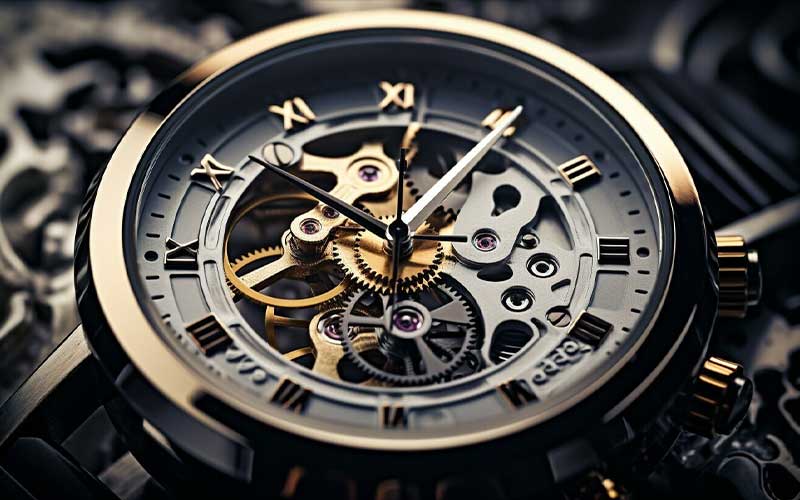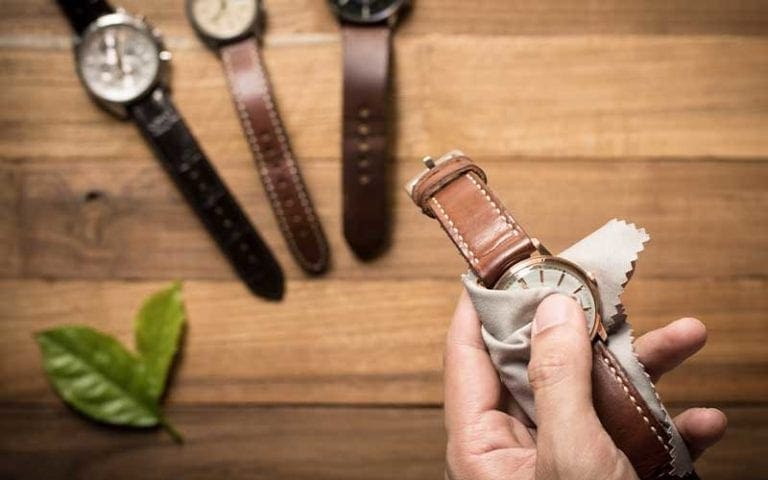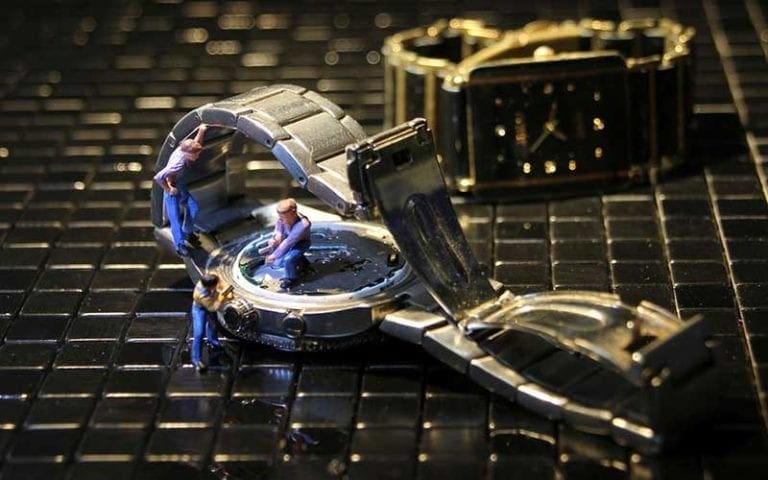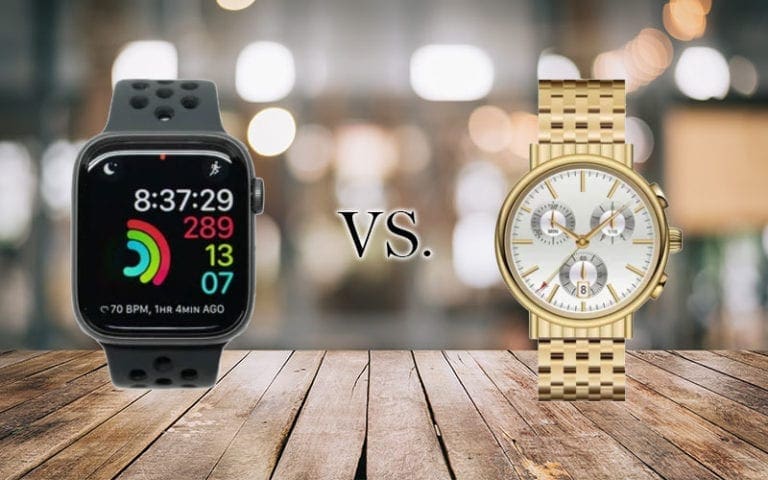An analogue watch is a classic timepiece that has been around for centuries. It uses traditional hands to mark the hours, minutes, and seconds on a face typically divided into 12-hour segments. Unlike a digital watch, an analogue watch requires no battery to power it. Instead, it uses the energy stored in a spring to keep time accurately.
Analogue watches come in many styles, from sleek and modern to traditional and ornate. They can make a fashion statement or simply serve a practical purpose. Understanding the basics of an analogue watch is essential if you want to appreciate the timeless elegance they offer.
Key Takeaways
- An analogue watch uses traditional hands to mark the hours, minutes, and seconds on a dial divided into 12-hour segments.
- It requires no battery and uses the energy stored in a spring to keep time accurately.
- Analogue watches come in many styles and can make a fashion statement or serve a practical purpose.
The Anatomy of an Analogue Watch
While analogue watches come in various styles and designs, they all share common components that make them function accurately. Understanding the anatomy of an analogue watch helps you appreciate how it works and how to take care of it.
The Dial
Also known as the face, the dial displays the time indications and sometimes extra features such as date, day, or 24-hour clock. The dial may have numerals, markers, or both, to indicate hours and minutes, and a subdial to display seconds or other complications.
The Hands
The hands are the moving pointers that indicate the time on the dial. The hour hand is usually shorter and thicker, while the minute hand is longer and thinner, allowing for easier reading of the time. The seconds hand is the thinnest and moves continuously around the dial, unlike the hour and minute hands that move incrementally.
The Crown
The crown, also called the winding stem, is the small button on the side of the watch that is used to set the time, date, and wind the watch. Depending on the watch type, the crown may have one or two positions. In the first position, you can adjust the date and time, while in the second position, you can wind the watch or make other adjustments. Pushing the crown back in will secure it in place.
The Movement
The movement is the mechanical or electronic component that powers the watch’s timekeeping function. The movement includes the escapement, balance wheel, and mainspring, which all work together to maintain the watch’s accuracy. The movement can be either quartz or mechanical, which determines how the watch keeps time.
The Case
The case is the outer shell that houses the dial, movement, and hands. Cases come in various materials such as stainless steel, gold, titanium, and ceramic, and in different shapes and sizes. The case usually has a crystal, which can be made of glass or synthetic sapphire, to protect the dial and hands from dust, moisture, and scratches.
Analogue watches are not only functional timepieces but also works of art. The next time you wear or admire an analogue watch, take a closer look at its anatomy and appreciate the craftsmanship that went into making it.
History of Analogue Watches
Analogue watches have a long and fascinating history, dating back to ancient times. The earliest timepieces were sundials, which used shadows to indicate the time based on the position of the sun. These were followed by water clocks, which used the flow of water to measure time.
Mechanical clocks were invented in Europe in the 14th century, and these gradually gave way to smaller, portable versions known as pocket watches. These early pocket watches were expensive and often ornate, reserved for the wealthy elite.
In the early 20th century, wristwatches began to gain popularity, with soldiers and pilots wearing them for convenience during World War I. The first wristwatch with an analogue display was produced in 1904 by Louis Cartier, and this style of timepiece quickly became the norm.
Throughout the 20th century, advances in technology led to the development of quartz movements, which use a battery to power a tiny crystal oscillator that keeps time with extreme precision. This technology revolutionized the watch industry, making accurate timekeeping affordable and accessible to the masses.
Today, analogue watches remain popular among collectors, horologists, and anyone who appreciates a classic timepiece. The craftsmanship and attention to detail that goes into creating a mechanical analogue watch is unmatched, and many people find the process of winding or setting the watch to be a satisfying ritual.
The history of analogue watches is a testament to human ingenuity and our ongoing quest for more accurate and convenient timekeeping. From humble sundials to the sophisticated mechanical and quartz movements of today, the analogue watch has endured as a symbol of timeless elegance and precision.
How Analogue Watches Work
Analogue watches may seem simple, but their inner workings are quite complex. When you wind the crown, it tightens the mainspring which then releases energy that powers the watch. This energy is transmitted through a series of gears and levers, ultimately driving the balance wheel.
The balance wheel serves as the timekeeper of the watch. It oscillates back and forth, and with each swing, it triggers the escapement. The escapement releases the energy from the mainspring in a regulated manner, causing the second hand to move forward in one-second increments.
The movement of the hands is precisely controlled by the gears and levers that make up the movement. The hour and minute hands are mounted on an arbor that is connected to the movement. As the movement turns, it drives the arbor, causing the hands to move.
The Escapement
The escapement is the heart of the watch movement. It is responsible for controlling the release of energy from the mainspring in a regulated manner. The escapement consists of a pallet fork and an escape wheel. As the balance wheel oscillates, it causes the pallet fork to move back and forth. This motion causes the escape wheel to advance one tooth, which releases a gear train.
This gear train powers the hands and drives the watch movement. The escapement is designed to allow the hands to move forward in one-second increments, ensuring that the watch keeps accurate time.
Analogue watches are intricate machines that require expert care and maintenance to ensure they continue to work properly. With proper care, a high-quality analogue watch can last for generations, making it a timeless and cherished possession.
Type of Analogue Watch Movements
Analogue watches come in different types of movements that determine how the watch works. The following are the three main types of analogue watch movements:
- Mechanical Movement: A mechanical analogue watch works by using a spring to power the watch. The spring is wound by hand through the crown, which transfers energy to the watch’s gears, causing them to move the watch’s hands.
- Automatic Movement: An automatic analogue watch uses the wearer’s movement to power the watch. As the wearer moves their wrist, a rotor inside the watch winds the spring, providing energy to the watch’s gears.
- Quartz Movement: A quartz analogue watch uses a battery to power a quartz crystal, which vibrates at a specific frequency. This frequency is measured and converted into a signal that powers the watch’s hands.
While mechanical and automatic watches require regular winding or wear to keep them running, quartz watches require battery replacements every few years.
Advantages and Disadvantages of Analogue Watches
As with any type of watch, analogue watches come with their own set of advantages and disadvantages. Here are a few key things to consider when deciding whether or not an analogue watch is right for you:
Advantages
- Style: One of the main advantages of analogue watches is their classic and timeless style. They are often seen as a fashion statement and can add a touch of sophistication to any outfit.
- Precision: Analogue watches can be just as precise as digital watches, especially when it comes to high-end models with Swiss-made movements. Plus, many people prefer the accuracy of reading time on an analogue watch.
- No need for batteries: Analogue watches are often powered by mechanical or automatic movements, which means they don’t require a battery and can run for years without needing a replacement.
Disadvantages
- Accuracy: While analogue watches can be just as accurate as digital watches, they do require regular maintenance and adjustments to keep them running correctly.
- Readability: Some people find it difficult to read the time on an analogue watch, especially those with smaller dials or complicated designs.
- Price: Analogue watches can be more expensive than digital or smartwatches, especially if you’re looking for a high-quality model with a Swiss-made movement or other luxury features.
Ultimately, whether or not an analogue watch is right for you depends on your personal preferences and needs. If you value style and precision and don’t mind investing in regular maintenance, an analogue watch may be the perfect choice. However, if you are looking for something more affordable or with more advanced features, a digital or smartwatch may be a better fit.
Popular Analogue Watch Brands
Analogue watches have been a popular fashion accessory for decades, with many iconic brands dominating the market. Here are some of the most well-known and sought-after analogue watch brands:
| Brand | Description |
|---|---|
| Rolex | A Swiss luxury watchmaker known for its precision and durability. Rolex watches are often associated with high society and are considered a status symbol. |
| Omega | Another Swiss luxury watchmaker known for its precision and innovation. Omega watches have been worn by famous individuals, including James Bond. |
| Tag Heuer | A Swiss watchmaker known for its high-quality sports watches and chronographs. Tag Heuer has partnered with various sports organizations over the years, cementing its status as a popular choice for athletes. |
| Breitling | A Swiss watchmaker known for its aviation-inspired timepieces. Breitling watches are often characterized by their large dials and chronographs. |
| Seiko | A Japanese watchmaker known for its affordable and reliable watches. Seiko is also credited with developing the quartz watch movement, which revolutionized the industry. |
While these brands are certainly some of the most popular, there are countless other analogue watch brands to explore and discover.
Maintenance and Care for Analogue Watches
Just like any other device or accessory, analogue watches require proper maintenance and care to ensure longevity. Here are some tips to keep your analogue watch ticking for years to come:
- Regular Cleaning: Wipe your watch clean with a soft, lint-free cloth to remove any dirt or smudges. Avoid using harsh chemicals or liquids as they may damage the watch’s components.
- Avoid Extreme Temperatures: Keep your watch away from extreme heat or cold as it can affect the accuracy of its timekeeping.
- Get it Serviced: Have your analogue watch serviced every two to three years by an authorized watchmaker to ensure that all components are functioning properly.
- Storage: When not in use, store your analogue watch in a cool, dry place away from direct sunlight and moisture. It’s best to keep it in a watch box or protective case to prevent scratches and damage.
- Wind Your Watch: If you have a manual or automatic movement watch, make sure to wind it regularly to keep the mainspring tension and avoid it from stopping.
Remember that analogue watches are delicate instruments and require proper care to ensure their longevity. By following these simple steps, you can keep your analogue watch running smoothly for years to come.
The Significance of Analogue Watches in Today’s World
Despite the prevalence of digital technology, analogue watches continue to hold significant cultural and historical value. In fact, many individuals still prefer the classic look and feel of analogue watches over their digital counterparts.
Analogue watches are often regarded as timeless pieces that evoke a sense of tradition and elegance. They have been handed down through generations and are often considered family heirlooms. They can also serve as a symbol of achievement or success, as many people associate luxury analogue watches with status and wealth.
Moreover, analogue watches serve as a reminder of the craftsmanship and mechanical expertise that went into creating them. The intricate inner workings of these timepieces are a marvel of engineering, capturing the ingenuity and creativity of their makers.
Finally, analogue watches offer a sense of connection to the past. They are an embodiment of the heritage and history that have shaped our world, providing a tangible link to the people and events that have come before us.
Overall, the significance of analogue watches in today’s world lies in their ability to transcend time and offer a glimpse into the past, as well as their inherent value as works of art and craftsmanship.
The Future of Analogue Watches
As technology continues to advance, it’s natural to wonder what the future holds for analogue watches. While digital watches and smartwatches have gained popularity in recent years, there’s still a strong market for classic, timeless analogue watches.
One possible direction for the future of analogue watches is the integration of new technology. Some brands have already begun to experiment with incorporating smart features, such as fitness trackers or smartphone connectivity, into their analogue watches.
This could potentially bring the best of both worlds, combining the elegance and sophistication of an analogue timepiece with the convenience and functionality of modern technology.
Another possibility is the development of new materials and designs. Analogue watches have been around for centuries, but there’s always room for innovation in terms of materials and aesthetics.
For example, watches made from sustainable or eco-friendly materials could become increasingly popular in the future as consumers become more environmentally conscious.
Finally, analogue watches may simply remain beloved classics for generations to come. The enduring appeal of analogue watches lies in their ability to tell time in a simple, elegant way, without the distractions and complexities of digital interfaces.
As long as people continue to appreciate the beauty and craftsmanship of analogue watches, they will continue to have a place in the world of timekeeping.
Conclusion
After exploring the basics, anatomy, history, and inner workings of analogue watches, it is clear that these timepieces have a timeless charm that endures despite the rise of digital technology. While digital and smartwatches offer advanced features and convenience, analogue watches have a classic elegance and simplicity that captivates watch enthusiasts and casual wearers alike.
From mechanical to quartz movements, analogue watches offer a range of options to suit individual preferences and styles. Popular brands like Rolex, Omega, and Tag Heuer have become synonymous with luxury and quality in the world of watches.
To ensure the longevity of your analogue watch, proper maintenance and care are essential. Regularly servicing and cleaning the watch can prevent damage and ensure accurate timekeeping.
The Future of Analogue Watches
As technology continues to evolve, analogue watches may need to adapt to stay relevant. However, it is likely that the classic design and appeal of analogue watches will continue to attract watch enthusiasts for many years to come.
In conclusion, analogue watches may not have all the high-tech features of digital and smartwatches, but they have an undeniably enduring charm that has stood the test of time. Whether you’re a collector or simply appreciate the simplicity and elegance of an analogue watch, these timepieces remain a beloved accessory that will never go out of style.






